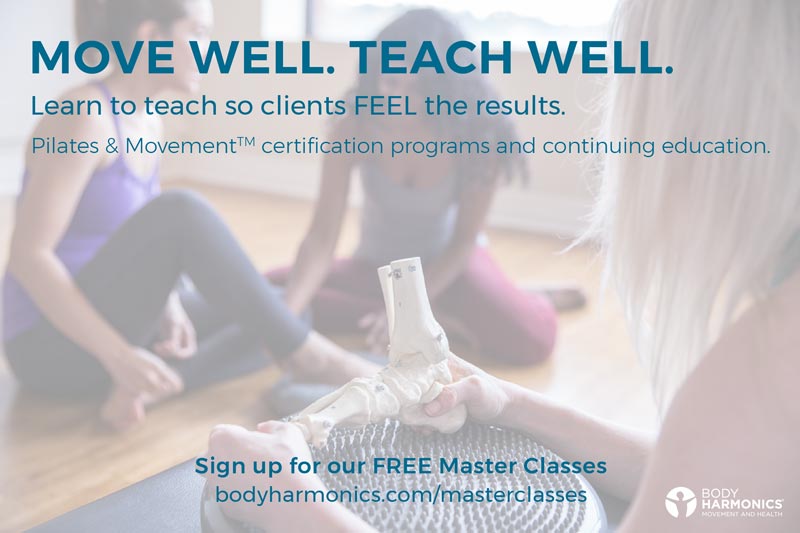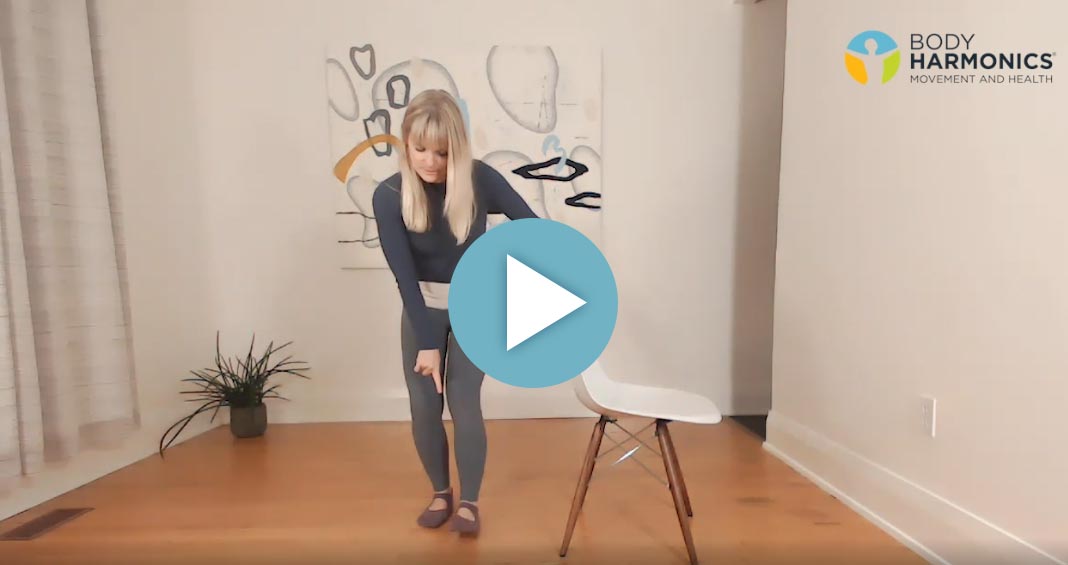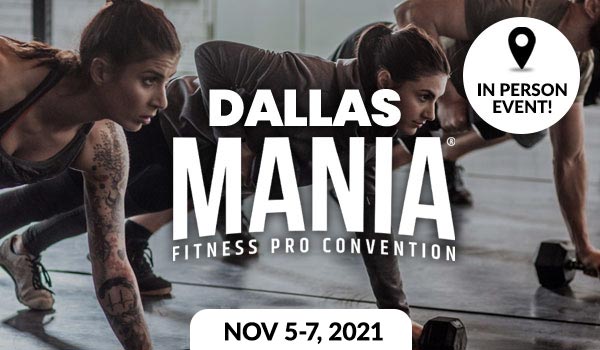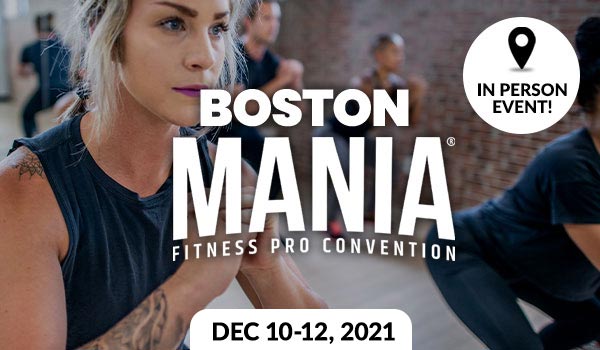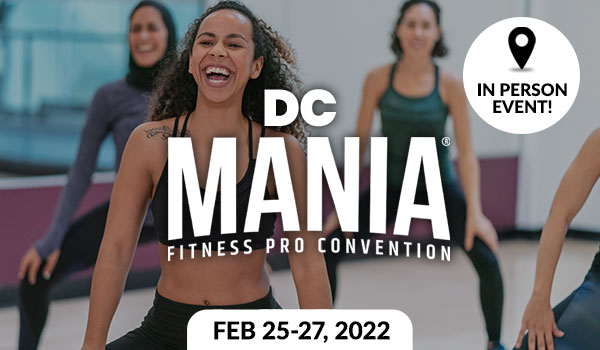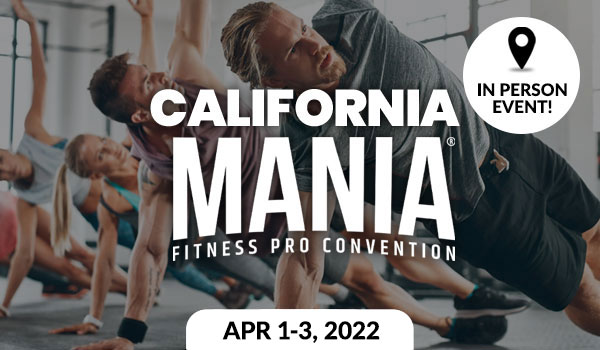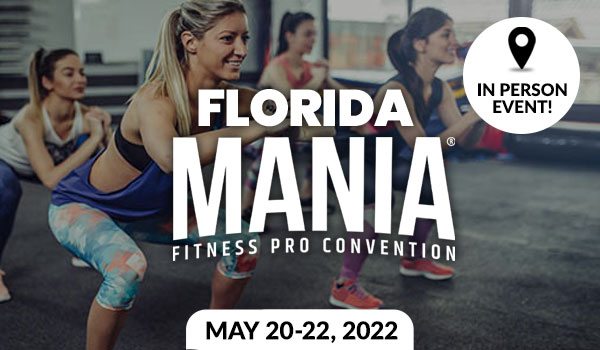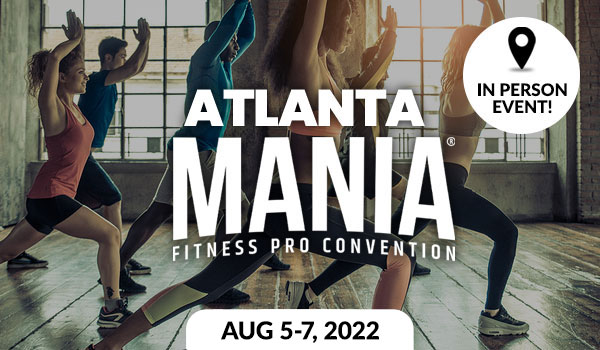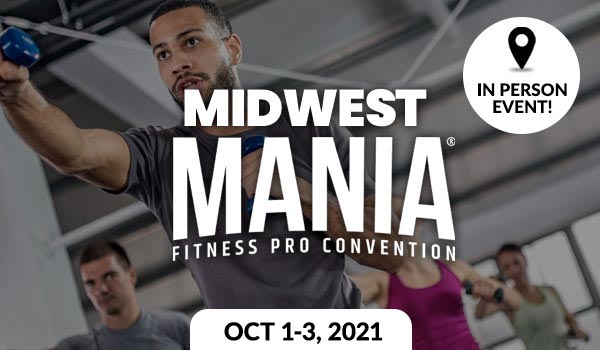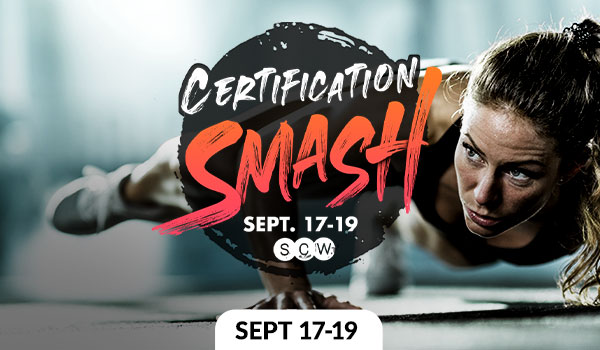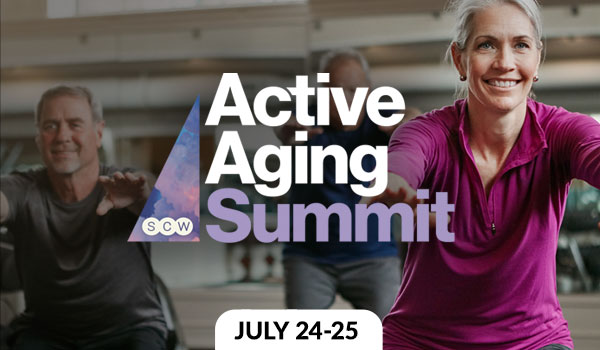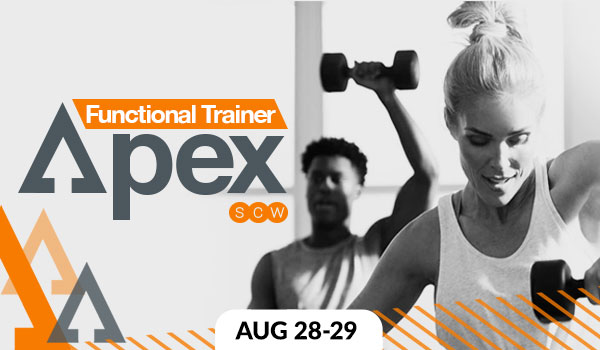
SCW Spotlite: Issue 35

Feeding the Mind at SCW Nutrition Coaching Summit
by Robin Taylor
The population of overweight and obese adults in the United States is staggering, at almost 75% according to the Centers for Disease Control. The country’s youth aren’t far behind, with statistics showing 1 in 5 children and adolescents are also obese. These astounding numbers indicate that nutritional information and guidance is essential to overcoming the current obesity epidemic. Most Americans desire to lose weight and improve overall well-being, but the information presented is often confusing or worse, incorrect.
 SCW Fitness Education, the proud leader of continuing professional health and wellness information, is thrilled to announce their first-ever Nutrition Coaching Summit. This one-day online event, Saturday, June 19, focuses solely on the latest research and education needed for Fitness Professionals to educate and share with their clientele. The 13 elite, specialized presenters, including Dr. Gregory Charlop, MD, Fabio Comana, MA, MS, Sara Kooperman, JD, Melissa Layne, MEd and Tricia Silverman, Rd, LDN, MBA, lead sessions with titles such as “Reducing Chronic Inflammation With Nutrition,” “Whole-Food Plant Based Diet” “Intermittent Fasting- Fact or Fiction” and “Nutrition and Mental Health.”
SCW Fitness Education, the proud leader of continuing professional health and wellness information, is thrilled to announce their first-ever Nutrition Coaching Summit. This one-day online event, Saturday, June 19, focuses solely on the latest research and education needed for Fitness Professionals to educate and share with their clientele. The 13 elite, specialized presenters, including Dr. Gregory Charlop, MD, Fabio Comana, MA, MS, Sara Kooperman, JD, Melissa Layne, MEd and Tricia Silverman, Rd, LDN, MBA, lead sessions with titles such as “Reducing Chronic Inflammation With Nutrition,” “Whole-Food Plant Based Diet” “Intermittent Fasting- Fact or Fiction” and “Nutrition and Mental Health.”
Participants have 24 sessions to choose from and can register for the one-day live-stream at $99 (regularly $199) or attend on their own schedule with an All-Access Pass for an additional $30. This option provides access to recorded presentations for 30 days after the event ends. Attendees can earn up to 15 CECs/CEUs from prominent organizations like SCW, AFAA, ACE, NASM and AEA with the purchase of All-Access. With so many valuable workshops covering a multitude of nutrition-specific topics, this value cannot be beat.
“By offering the unique programming available at Nutrition Coaching Summit, SCW can change the lives of both trainers and their clients,” says Sara Kooperman, CEO of SCW Fitness. This new event in the live-stream lineup promises to be homerun. It’s just incredible how many fitness professionals are committed to wellness and are integrating nutrient-based wellness into their education portfolios.”
 For Fitness Professionals looking to dive in deeper and focus on a specific topics, two pre-summit certifications are available. Join Melissa Layne, MEd, Friday, June 18, for SCW Nutrition, Hormones & Metabolism, a day of filled with cutting-edge information digging in to understanding terminology, macronutrients, digestive and reproductive hormones, as well as diet and physiological consequences. Active Aging Nutrition, led by Tricia Silverman, RD, LDN, MBA, provides scientific, research-based insights on distinct nutritional needs for the 50+ population. This laser-focused certification offers practical tips on body mass, cognition, excess body fat, vitamins and minerals, along with nutritional strategies for longevity from across the globe.
For Fitness Professionals looking to dive in deeper and focus on a specific topics, two pre-summit certifications are available. Join Melissa Layne, MEd, Friday, June 18, for SCW Nutrition, Hormones & Metabolism, a day of filled with cutting-edge information digging in to understanding terminology, macronutrients, digestive and reproductive hormones, as well as diet and physiological consequences. Active Aging Nutrition, led by Tricia Silverman, RD, LDN, MBA, provides scientific, research-based insights on distinct nutritional needs for the 50+ population. This laser-focused certification offers practical tips on body mass, cognition, excess body fat, vitamins and minerals, along with nutritional strategies for longevity from across the globe.
The Nutrition Coaching Summit could not take place without the generosity of our sponsors. FDN (Functional Diagnostic Nutrition) and The Health Sciences Academy offer resources for generating income, reaching more clientele, cutting-edge training, field specialization and functional health practices
This unique event is one-stop shopping for expert food and health education at an affordable price. With the multitude of classes offered, providing practical advice and current evidence-based data, Fitness Professionals will gain valuable tools needed to foster consumer success and grow their businesses. Join the proven Leaders of Live-Stream for an unforgettable day of scientifically sound programming created to advance careers, boost confidence and skills, and ultimately take a stand against the obesity epidemic. Register now for SCW Nutrition Coaching Summit.
 About the Author, Robin Taylor
About the Author, Robin Taylor
Robin is the SCW Editor for Spotlite, Tidal Waves and Weekly Work-UP, as well as Assistant Product Manager for MANIA® Fitness Conventions and Team Manager for WATERinMOTION®. Having taught Aquatic Fitness for over 15 years, Robin is AEA and AFAA certified and a WATERinMOTION® Champion. She has participated in several WIM educational videos, as both a pool participant and on-deck presenter. Robin has been an employee of SCW for almost five years. She is married and has two adult daughters and has a bachelor’s degree in journalism from the University of Florida.

IHRSA Restructures Membership Options
In a move to be more inclusive and flexible, IHRSA, The Global Health and Fitness Association, has unveiled a new, tiered structure that provides increased choices for membership and benefits to help the fitness industry succeed. The current membership structure has been modified and membership opportunities broadened in order to unite and assist the health and fitness industry post-COVID.
Members now have more opportunities to engage and take advantage of the benefits that best suit their needs. IHRSA shifted to a tiered benefit structure for health clubs developed in conjunction with a team of industry leaders.
 Membership options for clubs will include:
Membership options for clubs will include:
Basic: This level is ideal for companies that want to engage with industry best practices, resources, and experts. Operators will have access to management tools and industry insights to recover, innovate, and grow their business while expanding their voice and becoming more active in public affairs.
Standard: This level is designed for operators that want to grow their business, develop skills, train staff, and contribute to the industry. Operators can expect diverse insight, data-driven research, and tactics to curate stronger industry relationships and help build their business.
Premium: Created for those that want to lead their company and the industry as a whole to the highest degree of success, this level includes executive insight, priority service, and greater brand recognition. Expanded access to exclusive networking, events, and research, plus greater involvement in public affairs, lobbying efforts, and improving the industry’s image round out the premium membership.
“The new tiered membership allows IHRSA members to engage with the fitness industry at a level of their choosing, and which fits their needs best,” said Alan Leach, CEO of the West Wood Clubs in Dublin, Ireland, and chair-elect of the IHRSA Board of Directors. “At a time when uniting the industry has become so important, the additional membership options provide a voice to sectors of the industry that weren’t previously represented. It was a pleasure working with IHRSA and the Headlight Group to cultivate a new membership structure that focuses on meeting members where they are.”
IHRSA also added a Studio Membership and Professional Membership. Although hundreds of facilities are currently IHRSA members, the new memberships make it easier for studios and health and fitness industry professionals to be more involved with IHRSA. Everyone, including business and individual, can share their voices in the industry, build new relationships, learn new skills, and make connections.
The goals of the new membership layout are: be more inclusive, provide flexibility and allow members a choice in how to interact with IHRSA based on the benefits needed, along with assistance with funding advocacy efforts and public affairs.
“The goal of the tiered membership structure and additional membership options is to provide services to virtually any professional or business in the health and fitness industry,” said Brent Darden, IHRSA interim president and CEO. “IHRSA is fighting for the entire industry’s success. We hope that more clubs, studios, and industry professionals will join IHRSA, become more active with advocacy, and expand the industry’s voice. Supporting IHRSA through memberships enhances the success of your business and the industry. It’s simply the right thing to do.”
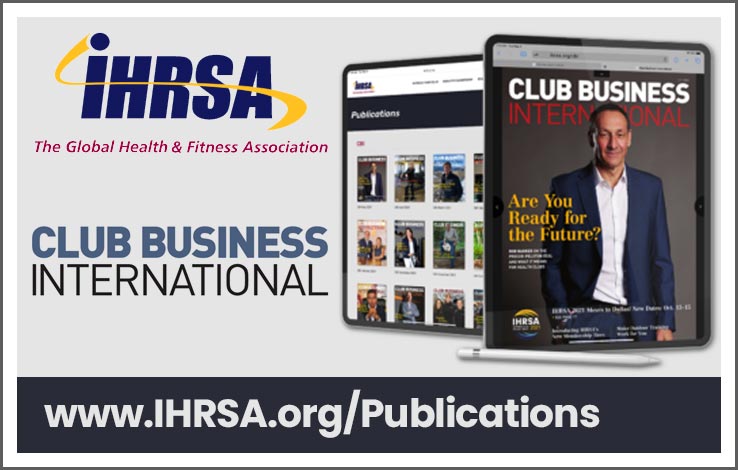 Current members will transition into the Standard Club Membership and enjoy added benefits. The transition to a tiered membership for existing members will begin in July as memberships come up for renewal.
Current members will transition into the Standard Club Membership and enjoy added benefits. The transition to a tiered membership for existing members will begin in July as memberships come up for renewal.
For U.S. members, a portion of the IHRSA membership dues will go toward the public affairs and National Health & Fitness Alliance’s (NHFA) efforts to support industry advocacy and public relations efforts. In contrast, international membership dues will contribute to the Global Health & Fitness Alliance (GHFA). An investment in membership also means an investment in the IHRSA Foundation. IHRSA pledges to donate 1% of its total annual revenues to the foundation to promote health through exercise.
IHRSA, is a not-for-profit trade association representing the global fitness industry of over 200,000 health and fitness facilities and their suppliers. They maintain a leadership role in advancing physical activity, which is critical to peak health and fight the battle against obesity and chronic lifestyle disease. As one of the world’s leading authorities on the commercial health club industry, IHRSA’s mission is to grow, promote, and protect the health and fitness industry. IHRSA provides its members with benefits and resources that will help them be more successful. IHRSA and its members are devoted to making the world happier, healthier, and more prosperous through regular exercise and activity promotion. IHRSA is the publisher of Club Business International, the leading monthly magazine for the global fitness industry.
 About the Author, Andrea Austin, Owner & CEO BeatBoss™ Indoor Biking & Consulting
About the Author, Andrea Austin, Owner & CEO BeatBoss™ Indoor Biking & Consulting
With over 30 years in the fitness industry, Andrea brings long standing expertise in group exercise, indoor cycling and personal training when creating and presenting the BeatBoss™ Methodology. She has a passion for innovation and creative problem solving and loves to positively share her insights with those learning from her. Andrea holds multiple fitness and wellness certifications including NASM Personal Trainer with specialty focuses in STOTT Pilates, Vinyasa and Yin Yoga, the study of fascia and movement, and active aging. Visit Beat Boss here.

Fix Forward Head Posture For Better Balance
by Elly Frymire Cone
With so much time sitting at our desks looking at computers, phones, playing games, cooking, driving, and even watching TV, our posture suffers more often than we realize. Over time, these repetitive tasks put us into a position called forward head posture, in which our heads and necks protrude forward into a flexed position. When these muscles finally do relax, they do so in a ‘shortened’ position, meaning the shoulders will stay rounded forward into a slouching or slumped position.
 How can you tell if you have a forward head posture? If your neck slants forward, and your head pokes in front of your shoulders instead of resting directly above them, you likely have forward head posture. This position can strain your neck muscles and load dozens of extra pounds of pressure on your cervical spine. It also increases the risk of spinal degeneration and leads to muscle imbalances. One rule of thumb is for every inch that the head is held forward in poor posture, an additional 10 pounds of weight is felt on the cervical spine. So, if the average head weighs approximately 11 pounds, just 1 or 2 inches of forward head posture can more than double the load on the cervical spine.
How can you tell if you have a forward head posture? If your neck slants forward, and your head pokes in front of your shoulders instead of resting directly above them, you likely have forward head posture. This position can strain your neck muscles and load dozens of extra pounds of pressure on your cervical spine. It also increases the risk of spinal degeneration and leads to muscle imbalances. One rule of thumb is for every inch that the head is held forward in poor posture, an additional 10 pounds of weight is felt on the cervical spine. So, if the average head weighs approximately 11 pounds, just 1 or 2 inches of forward head posture can more than double the load on the cervical spine.
Luckily, there are many things we can do to improve posture for us and our clients. First, we need to know what imbalance has occurred, for example, tight chest muscles contribute to a head jutting forward. On the reverse side of our body, if the upper back is constantly being hunched over it creates an elongation of our back and neck extensors. Here’s a test, pick up your phone and look at it. See how your chest rounds in the front, your upper back also rounds and the head is forward. We need to do the opposite of this. Here’s what you should be doing. Try to stretch and lengthen your chest or pectoral muscles while at the same time tightening up the back and neck extensors. In doing so, your shoulders and head will have an easier time staying pulled back and in good posture.
Good posture means:
chin parallel to the floor
- shoulders rolled back and down
- neutral spine
- arms at your sides with elbows straight and even
- cylinder shaped core braced
- hips even
- body weight distributed evenly on both feet
How Poor Posture Causes Neck Pain
Chin tucks: A chin tuck exercise is quick and easy to do and it helps strengthen your neck extensor muscles, the muscles responsible for keeping your head aligned over your shoulders. With good posture, pull your chin directly backwards. Keep head steady, try not to let your head tip backwards. Repeat 10X a few times each day.
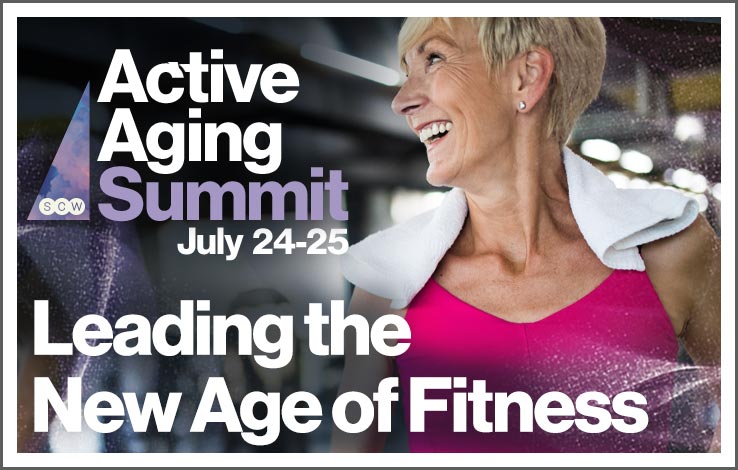 Chest stretch or chest expansion: Standing tall with your feet hip width apart, interlock your fingers behind your back and straighten your arms as you pull your shoulder blades together and puff out your chest. Keeping your shoulders back and down and shoulder blades pull together, your chest up, hold this stretch as long as it is comfortable.
Chest stretch or chest expansion: Standing tall with your feet hip width apart, interlock your fingers behind your back and straighten your arms as you pull your shoulder blades together and puff out your chest. Keeping your shoulders back and down and shoulder blades pull together, your chest up, hold this stretch as long as it is comfortable.
Muscle strength affects balance in a number of ways. The “core muscles” of the back, side, pelvis, and buttocks (think of your core as a column being the foundational support for your body), form a sturdy central link between your upper and lower body. Weak core muscles encourage slumping, which tips your body forward and thus off balance. Strong lower leg muscles also help keep you steady when standing.
It’s easy to hunch your head forward when you spend most of the day sitting in a chair and staring at a screen. Here are some tips to improve your posture:
- Arrange your workstation so that it encourages you to keep your head aligned over your shoulders.
- Raise your computer screen so your eyes hit towards the top of the screen when you look straight ahead.
- Position your mouse and keyboard so when you use them your forearms are parallel to the floor and your elbows are softly bent.
Also, as a great reminder, use your phone and set an alert to check your posture a few times a day. Working these moves into your everyday routine will make a significant improvement in your posture and balance.
For more helpful information to improve body function, mobility and fall prevention and much more, check out the upcoming Active Aging Summit. This 2-day event at only $149 (reg $249) educates fitness professionals with practical advice to working with clients in the 50+ population. With 72 sessions led by 33 Expert Presenters, attendees leave not only with newfound knowledge to take back to their clients, but with expertise to boost confidence, skills and possibly even income. For $30 more ($179), attendees earn up to 15 CECs/CEUs from recognized industry providers, join in on the live-stream and access workshop recordings for 30 days after the event.
 About the Author, Elly Frymire Cone
About the Author, Elly Frymire Cone
Elly holds a BS and fitness certifications from ACE, NASM, Arthritis Foundation, and Exercise is Medicine. As founder, creator and CEO of ArcaRays, she developed safe products to enhance core balance and fall risk reduction, creating a key solution to aging well. Elly brings her years of experience and an enthusiastic passion to help older adults stay fit, active and independent.

Multi-Sensory Training to Preventing Falls in Seniors
by Margot McKinnon, MEd, NCPT
According to the United Nations, “Between 2017 and 2030, the number of persons aged 60 years or over is projected to grow by 46 percent (from 962 million to 1.4 billion) globally outnumbering youth, as well as children under the age of 10.” These compelling numbers should be a wake-up call for all of us working in the fields of exercise and movement education to learn what creates the best results for older adults and why.
 Evidence shows that an active lifestyle is critical to healthy aging, which the World Health Organization defines as “… the process of developing and maintaining the functional ability that enables wellbeing in older age.”
Evidence shows that an active lifestyle is critical to healthy aging, which the World Health Organization defines as “… the process of developing and maintaining the functional ability that enables wellbeing in older age.”
Maintaining an active lifestyle as we age isn’t just about modifying exercises or activities that we might have done in our ‘20s. It requires incorporating fall prevention strategies into our daily routines. Most people imagine this to mean balancing on one foot and learning how to get up off the floor. While these activities are important, learning to prevent a fall needs to include conditioning of structures and systems head to toe.
Multi-sensory training and foot and ankle exercises are two examples that improve a person’s ability to balance, shift weight and navigate changing terrain. Both can be done in short or long intervals. They can also be done anywhere—at the studio, gym, at home or on the road.
Multi-Sensory Training
With multi-sensory training, the sensorimotor and the visual and vestibular systems are targeted. All three are involved with maintaining equilibrium. Changing the environment to stimulate one system over the others is a simple way to conduct this type of training and a fun way to challenge both body and mind. Altering the body position, closing one or both eyes, or using different types of surfaces—cushiony, spiky, stable, or unstable–are all examples of changing the environment. The key is working on the systems that control balance and not just on balance exercises.
Example of a multi-sensory exercise sequence:
- Sit on a chair and perform arm movements
- Sit on a balance cushion on a chair and perform arm movements
- Sit on a balance cushion on a chair, close eyes and perform arm movements
- Sit on a balance cushion on a chair, close eyes, turn to one side slightly, and perform arm movements
Mobility for feet and ankles
People who can align their center of mass (body) directly above their base of support (feet) during quiet standing can sway as much as 12° in a forward-backward direction (8° forward and 4° backward) and 16° laterally before they must take a step. This ability to sway without taking a step is referred to as a stability limit. In older adults who are beginning to experience balance problems, stability limits decrease, especially in the backward and lateral directions. The result is an increased risk of falling.
What causes a decrease in stability limits?
- Weak ankle muscles and reduced range of motion in the ankles
- Neurological trauma such as stroke or Parkinson’s disease
Exercises to improve stability limits:
Wiggle toes in as many directions as possible
Plantar and dorsiflex ankles (“point and flex feet”)
Draw circles with feet
Draw the alphabet with feet
Squat with emphasis on ankle motion (bending at the ankles)
In the common aging-related doomsday scenario, people imagine life as an old person to include living in a body that loses muscle strength and bone density by the minute. Aging gets equated with chronic aches and pains, varying degrees of cognitive decline, and social isolation with no sense of purpose. When healthy aging and quality of life are the main objectives, the physical, mental and emotional needs of our senior population can be met easily with thoughtful and thorough exercise programming that goes beyond simply modifying the exercises we teach to a younger demographic.
In this 60 minute video, Margot takes fitness and wellness professionals who work with aging adults through gentle yet highly effective standing and seated exercises to try with older adults.
For more helpful information to improve body function, mobility and fall prevention and much more, check out the upcoming Active Aging Summit. This 2-day event at only $149 (reg $249) educates fitness professionals with practical advice to working with clients in the 50+ population. With 72 sessions led by 33 Expert Presenters, attendees leave not only with newfound knowledge to take back to their clients, but with expertise to boost confidence, skills and possibly even income. For $30 more ($179), attendees earn up to 15 CECs/CEUs from recognized industry providers, join in on the live-stream and access workshop recordings for 30 days after the event.
 About the Author, Margot McKinnon, M.Ed., NCPT
About the Author, Margot McKinnon, M.Ed., NCPT
Margot McKinnon, M.Ed., NCPT, is founder and CEO of Body Harmonics Inc., a full-service health and fitness company dedicated to helping people to teach well, move well and be well—in person and online. She is the creator of a respected Pilates & Movement teacher training program, 55-plus continuing education courses, hundreds of streaming videos, and is a published author. Science-driven content, adult education practices, and a passion for making movement a multisensory, engaging an empowering experience underpin Margot’s approach. www.bodyharmonics.com

The Legality Around Vaccines for the Fitness Industry
by Cory Sterling
As vaccine roll-outs ramp up around the world, we have gotten several questions about mandatory vaccine policies. Vaccines are an incredibly powerful tool for public health. These guidelines are general and subject to change as the law progresses. They are aimed toward in-person U.S. based gyms and studios, in communities where vaccines are widely available. For more information about your specific guidelines, reach out to your county or municipal health department.
 Here are the most consistent questions we have been asked:
Here are the most consistent questions we have been asked:
Can businesses require employees to get vaccinated?
In general, yes, employers can elect to only employ those who have been vaccinated. At-will employment allows employees to be terminated for most any reason, as long as it is not discriminatory. There is wide precedent for allowing vaccine mandates, including vaccines for tuberculosis, polio, and chicken pox. These vaccines stop the spread of highly contagious viruses and keep the general public safe.
Medical Accommodations
Employers do have a duty to make reasonable accommodations for those with medical exemptions, to avoid facing discrimination claims under the Americans with Disability Act (“ADA”). A medical exemption might be available to those with a “disability” as defined by the ADA. If a disability exists, then an employer must make a reasonable accommodation, if one exists. A reasonable accommodation is one that has only a very small burden on the employer. In a typical work environment this might mean allowing that employee to work virtually. This is rarely an option for a gym, and there are few accommodations, if any, that would be an option. Therefore, it is likely okay that gyms or studios cannot provide accommodation.
Incentives and Education
If you don’t feel comfortable mandating the vaccine to staff, you can also incentivize them to do so. Offering them a free t-shirt or an extra day of PTO might encourage them to get the shot. Vaccine hesitancy is real and offering staff information about how the vaccines meet all safety requirements can encourage them to make the leap. Consider covering costs associated with the vaccine (paying for parking at the site, etc.) and developing a vaccine education program to encourage staff to get vaccinated.
Can businesses require patrons to get vaccinated?
In general, yes. We require certain things for patrons every day, including wearing shoes or shirts, and following basic etiquette to keep everyone safe. Some patrons might not be able to receive a vaccine for a medical or religious reason, so it is thoughtful (but not required) to provide a reasonable alternative that doesn’t put others at risk. At a studio, that might mean offering virtual classes. A “reasonable alternative” is one that only puts a small amount of extra work on the business.
Private businesses have the right to do lots of things, for any reason. Nightclubs can turn you away for wearing sandals. Gyms can make you leave if you display reckless behavior with weights. Studios can require you to sign away your legal right to sue for negligence. Therefore, private businesses can also require patrons to be vaccinated.
How do I get proof?
This question is delicate and does not have a clear answer. Some people are comfortable sharing their vaccination card with the world via social media, while others are more private. Marking their file that they have been vaccinated is perfectly acceptable.
In some states, governments are developing a ‘passport’ similar to the Yellow Cards for international travel. This would be an excellent way to see if someone has been vaccinated. Unfortunately, they are not widely available yet. In light of this, it is most reasonable that you ask people to sign an affirmation that they have been fully vaccinated. This allows people to volunteer the information and doesn’t require you to keep track of their health information via a vaccine card. There is the risk that people will lie, however that risk is always there when getting staff or patrons to sign legal documents, and the remedies are already established.
 What if clients have already paid?
What if clients have already paid?
If a client has already paid for your services before you implemented the rule, then you must refund them. If a client has paid for the services while knowing that you require vaccination (this is one reason why a customized Service Agreement is so important), then follow your standard refund policy. Another option would be giving them a gift card to use for virtual services or to buy items like a yoga mat.
What if I am not in an at-will employment jurisdiction?
You must then follow the regulations for that jurisdiction when it comes to letting someone go. In some places, you will need to pay their wages for 30 days, or two weeks. If you aren’t sure about the regulations in your jurisdiction, you can check with your respective Department of Labor.
I am here to support you with legal agreements, updates or any questions you have – just send an email to cory@consciouscounsel.ca. You can also book a Free Legal Consult here, exclusively for SCW Fit members, to ensure you’re at best legal practices and get any legal agreements you need.
We are happy to support the SCW Fitness community. Please reach out if any of this information is overwhelming or you’d like specific details pertaining to your business. For a Free Fitness Legal Checklist: https://consciouscounsel.pages.ontraport.net/fitnesschecklist
We will also be presenting at upcoming in-person SCW MANIA® Conventions returning to Chicago (Midwest), Dallas and Boston this fall.
 About the Author, Cory Sterling
About the Author, Cory Sterling
Cory Sterling is the Founder of the heart-leading law firm Conscious Counsel, a lawyer, yoga teacher and group fitness instructor. He wrote The Yoga Law Book and has served hundreds of fitness professionals and studio owners around the world. He won the award for “Highest Rated Session” at MindBody Bold and stays committed every day to teach about the law in a FUN and practical way. Email Cory here cory@consciouscounsel.ca or visit Conscious Counsel here.

7 Common Issues That May be a Sign of a Nutritional Deficiency
by Dr. Candice Seti, Psy.D.
Many of us try to have a well-rounded diet and take care of our bodies, but symptoms tend to pop up. They might be a result of our actions or behaviors, but they can also be related to nutrition. Here are some common indicators related to nutritional deficiencies and some tips you to help prevent them!
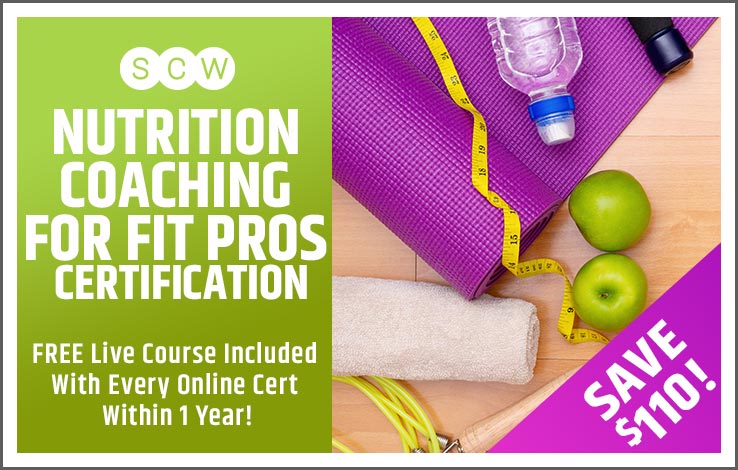 Leg Cramps
Leg Cramps
Do you get frequent muscle cramping on your calves, feet, or toes? Well, you are not alone and you may be able to prevent it with the foods you eat. Potassium, a common electrolyte, is needed for your body to build muscle and protein. If potassium levels get low, your calves may cramp up. The good news is, there are lots of edible options to help stop this! Try adding sweet potatoes, bananas, avocado, coconut water, and almonds to your diet! Not only are these amazing foods tasty, but they are also filled with many vitamins and minerals, including the needed potassium for cramping muscles.
Dandruff
There are many factors that can cause dandruff and deficient nutrients could be one of them. Dandruff are flakes of skin from the scalp and generally result from a lack of oil. This typically happens when your body is deficient in zinc, niacin, and riboflavin. Luckily, you can get all of those nutrients in whole grains, starchy vegetables, poultry, and legumes. So, the next time you have a bowl of chicken chili or a baked potato, know you are helping your hair, head & shoulders (from flakes.)
Brittle Nails
Just like our scalp, our nails need moisture to be happy and healthy. The best source is biotin, also known as Vitamin B7. When our bodies don’t get enough, our nails end up dry and brittle. The human body prefers biotin from food instead of supplements and luckily there are quite a few nutritional sources out there. Focus on incorporating whole grains, spinach, sweet potatoes, and eggs into your diet to keep your nails strong and long.
Hair Loss
Hair loss is not always something you can fix. It is commonly causes by aging and genetics. However, there are also some behavioral causes of hair loss and one of them is a deficiency in iron, zinc, and niacin. Iron helps make the DNA present in our hair, Zinc is needed for protein synthesis and cell division involved in hair growth, and niacin helps the hair follicles produce stronger strands. Good food sources: Whole grains, (again!), meat, eggs, and leafy greens.
Cracks in the Corners of the Mouth
Angular cheilitis is the inflammation of the corners of the mouth that causes cracks, splits, and/or bleeding. It can be due to dehydration, excessive salivation or possibly the result of a deficiency in iron and riboflavin. Both of these important nutrients can be found in the same resources. For some, this is good news and for others, maybe not. The best food sources for iron and riboflavin are liver, spinach, and lentils. As a side note, for vegetarians, lentils can be used at a meat replacement in burgers and liver pate.
 Poor Night Vision
Poor Night Vision
Do you have a much harder time seeing at night than in the day? Well, this could be a normal part of the aging process or it could be a deficiency in Vitamin A. Rhodopsin, produced from Vitamin A, is a pigment found in the retinas that helps with night vision. Often this deficiency is linked to vision issues in low light or darkness. Vitamin A is a fat soluble vitamin so you want to avoid it in supplement form, if possible. Instead focus on food sources, like yellow/orange veggies, eggs, fish, and dark, leafy greens.
Bleeding Gums
If your gums bleed easily or regularly, your body might be lacking Vitamin C. Being deficient in this vitamin prevents wounds from healing, possibly causing cell damage. A Vitamin C deficiency commonly shows up as bleeding gums. Considering the fact that our body doesn’t make Vitamin C on its own, we need acquire it elsewhere. Best sources, there are quite a few. Citrus fruits, kale, cruciferous vegetables, tomatoes, and red bell peppers, just to name a few.
As you read through the list of symptoms related to nutrient deficiency, you may have noticed a trend in food sources, possibly even a rainbow of colors. Including a variety of fruits and vegetables is necessary for complete nutrition to keep our bodies healthy and strong. So, if you have any symptoms on this list, a good start might be playing with your diet and adding in some of these nutrient-rich foods. It is always a good idea to contact your doctor and tell them what you are experiencing. He or she may have other ideas or ways to ease your conditions.
To learn more about nutrient deficiency, along with many other science-based trending health and wellness topics, register for the one-day Nutrition Coaching Summit. Choose from 24 laser-focused sessions led by 13 top Nutrition Experts and earn up to 15 CECs with All Access registration for only $129. Take advantage of a live-stream event along with recorded sessions for 30 days and take away practical advice to advance your career and help your clients gain confidence and feel successful.
 About the Author, Dr. Candice Seti, Psy.D.
About the Author, Dr. Candice Seti, Psy.D.
Known as “The Weight-Loss Therapist” online, Dr. Seti is a licensed clinical psychologist, certified nutrition coach, certified weight management specialist, certified expert life coach, certified personal trainer, and certified insomnia treatment clinician with a private practice in San Diego, California. She is the author of Shatter the Yoyo, a featured contributor to numerous blogs, and has appeared on many television and radio networks. Dr. Candice Seti is committed to helping others achieve health and wellness while gaining self-confidence, stopping self-sabotage, and achieving their goals through behavioral lifestyle and cognitive changes.
 We’re always looking for great content highlighting the newest things in the world of fitness. Please submit your article directly to editor@scwfit.com for immediate consideration!
We’re always looking for great content highlighting the newest things in the world of fitness. Please submit your article directly to editor@scwfit.com for immediate consideration! Spotlite, April 9, 2025
Spotlite, January 5, 2025
Spotlite, November 11, 2024
Spotlite, September 27, 2024
Spotlite, August 31, 2024
Spotlite, July 26, 2024
Spotlite, June 22, 2024
Spotlite, May 23, 2024
Spotlite, April 26, 2024
Spotlite, March 22, 2024
Spotlite, February 19, 2024
Spotlite, January 20, 2024
Spotlite, December 21, 2023
Spotlite, November 18, 2023
Spotlite, October 22, 2023
Spotlite, September 21, 2023
Spotlite, August 19, 2023
Spotlite, July 19, 2023
Spotlite, June 19, 2023
Spotlite, May 18, 2023
Spotlite, April 21, 2023
Spotlite, March 28, 2023
Spotlite, February 18, 2023
Spotlite, January 21, 2023
Spotlite, December 16, 2022
Spotlite, November 19, 2022
Spotlite, October 22, 2022
Spotlite, September 24, 2022
Spotlite, August 23, 2022
Spotlite, July 22, 2022
Spotlite, June 20, 2022
Spotlite, May 18, 2022
Spotlite, April 20, 2022
Spotlite, March 25, 2022
Spotlite, February 17, 2022
Spotlite, January 14, 2022
Spotlite, December 17, 2021
Spotlite, November 18, 2021
Spotlite, October 25, 2021
Spotlite, September 16, 2021
Spotlite, August 9, 2021
Spotlite, July 10, 2021
Spotlite, June 8, 2021
Spotlite, May 14, 2021
Spotlite, April 30, 2021
Spotlite, March 30, 2021
Spotlite, February 23, 2021
Spotlite, January 20, 2021

